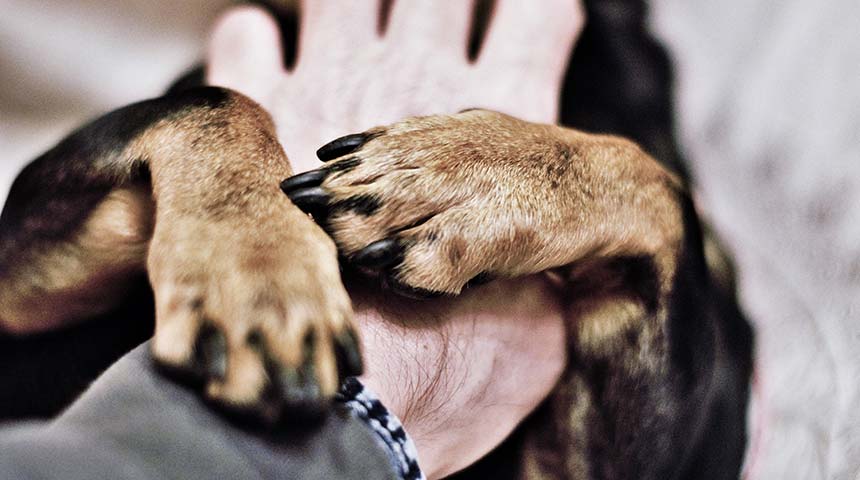
Mom! Where is Molly? Dad, where’s Buddy?
For children, animals are a source of education. A child immediately understands the consequences of his actions when he/she tries to catch their pet in an abrupt manner; they will run away and eventually bark or scratch the child. The sanction is immediate. They will realize the consequences of their actions and will modify it according to their goal. A child learns, in this manner, the impact of their actions. The dog will often serve as a "walker" for the young child who is learning how to walk. It will be a confidant, a "brother" for the single child.
The death of a beloved pet is often a child's first mourning experience. It is the first time he experiences the suffering of a loved one, sickness, death, or the sight of a corpse.
Though each person reacts differently, there are normal stages to the grieving process. During the grieving process, everybody will go through 5 stages. Their order may vary.
Grieving stages
- Shock and denial: this stage is characterized by shock and negation. The child will look stunned.
- Anger: the child will feel guilty towards himself or the veterinarian, and will have the impression they have done something wrong.
- Bargaining: the child will have a tendency to bargain with "God" by promising this or that if the animal is saved.
- Sorrow and depression: at this stage, the child will feel the grief of losing their pet. The length of this stage depends on the closeness of the ties the child had with their companion.
- Acceptance: with time, the child will learn to accept the situation, and will be able to "move on". This is a sign that the child has accepted reality. They will then be able to love another animal.
In the case of "pathological" or abnormal grief, the child gets stuck at a particular stage for months or even years, sometimes indefinitely.
Behaviours indicating that a child is suffering from pathological grief
With good moral support, most children will accept the death of an animal without too many problems. However, some children can react violently or present these signs:
- The child abnormally clings to their loved ones.
- The child has persistent nightmares.
- The child stays away from their family and friends.
- The child is more nervous and a lot less confident.
- The child who was toilet-trained regresses.
- The child shows behaviour problems and/or their grades are going down.
When these signs appear immediately after the death of an animal, they are not abnormal. However, after a month or more, it would be appropriate for the child and his/her family to see a psychologist.
Factors influencing a child's reaction when a pet dies
- What the animal means to the child.
- The child’s level of understanding of the concept of death (intellectual maturity).
- The foreseeable or sudden nature of the animal's death.
- The way death is explained and perceived by the people around them, and if the child receives the moral support they need.
Perception of death at different ages
- Up to age 5, children do not see death as something permanent but rather as something temporary, a bit like sleep. The child always expects that what has disappeared will come back. They see death was accidental, something that can be avoided by being very careful.
- Children between the age of 5 and 9 understand that death is final. This is a great step towards maturity. This is also the age group where children are able to identify death. At this age, children still think that death is avoidable if one is careful or lucky.
- Around 9, most children know that death is final, inevitable, and universal. They have learned the adult concept of death. Children realize that all living beings die, including loved ones and themselves. This realization is often accompanied by an awakening and an interest for the hereafter.
To help your child grieve
- If you know that the animal is going to die, it is preferable to discuss this openly with your child. Even though they do not understand everything, children realize that something important is going to happen. Children that are too young to understand the meaning of death will be even more troubled if its arrival is surrounded by whispers.
- Make sure that your child has a privileged relationship with at least one adult, with whom they will be able to talk about death and confide in. Never tell the child that they are too old to cry. Their feelings should never be rejected.
- Always explain what is happening in a simple language, without entering into details that can be traumatic for the child.
- Replacing the lost pet too quickly can hinder the normal death acceptance process. The child can see in this animal the pet that he/she had before and ask of it to behave in exactly the same way.
- On the other hand, the child can also reject the new pet because they believe that by having a new pet, they are betraying the one that is gone.

